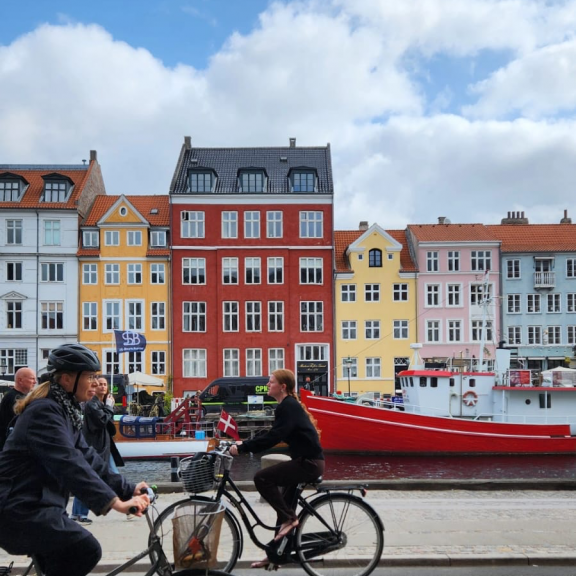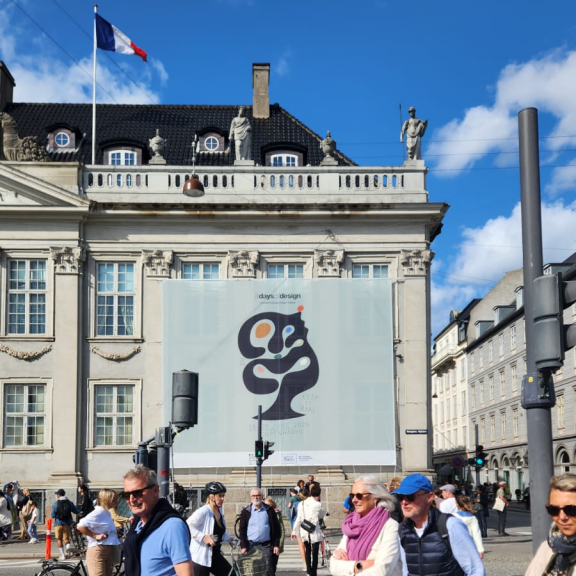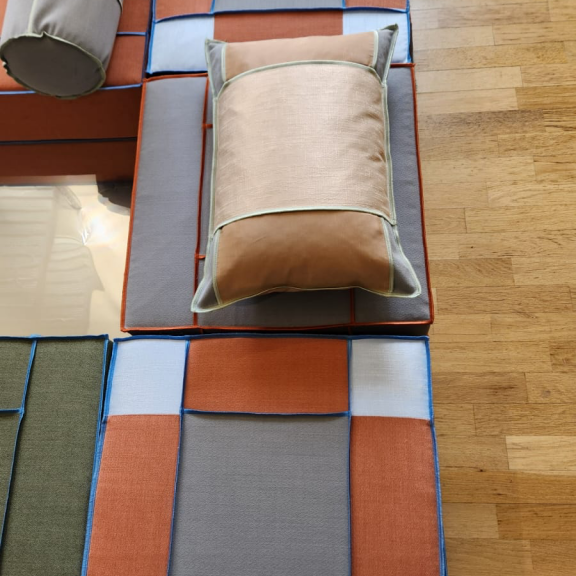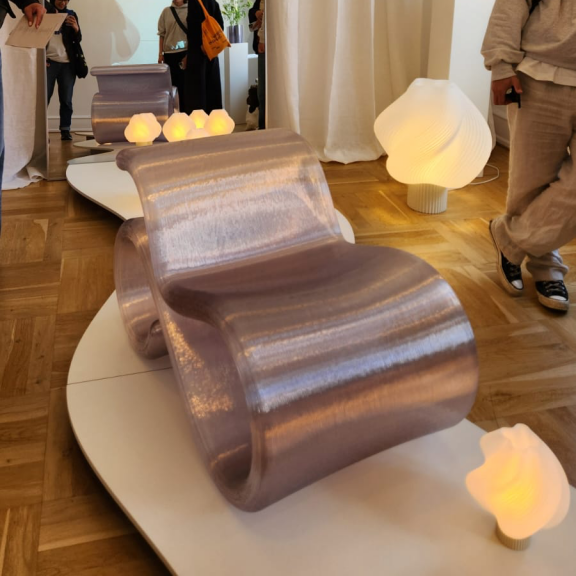In every design, urbanism, and psychology book I’ve read recently, Copenhagen and Scandinavian regions are always mentioned in at least one or two discourses. Whether Copenhagen was being mentioned as the patron for functional design or as the happiest place on Earth. And I wonder why I have been haunted by the word of Copenhagen while I am here in London.
The feeling was empowered even more when I got an information from my friend about the event called 3DaysofDesign at Copenhagen in June 2025. And so it goes, I think this is the right time for me to actually plan a visit to Copenhagen this summer, to find the reason why.
In a month, I did everything so I can apply for the Schengen visa and plan the itinerary for this trip. It is so peculiar how I was so moved to go to this event in Copenhagen. And in addition to that, one of my friends told me that during my planned visit to Copenhagen, there will be a Midsommar festival in Malmö, Sweden, just 45 minutes away by train from Copenhagen. Perfect! It is definitely goes to my itinerary list, all because I always love folk festivals and cultural activities like this. The whole plan was dedicated to a design and cultural trip, which I wished would be the most invaluable trip I would get.

And yes, I will spoil it in the beginning, this is actually the most satisfying solo trip I’ve ever had.
Celebrating Design in 3 Days

The afternoon summer breeze in Copenhagen greeted me very well during the first day. I have seen a lot of young people on my tap-free bus ride to the hostel, such an amazing system I thought. It was so intriguing to see a lot of people going out during the summer with various activities that is currently happening in the town, including this most wanted design event.

3DaysofDesign is Denmark’s annual design festival initiated 13 years ago from a small district in Nordhavn. The event later expands throughout Copenhagen and conceived as a platform to showcase and various great designs from brands to studios across 8 district in Copenhagen. Such a fun walk experience for me to visit each of the design studios in 8 different districts by foot.
I had the opportunity to explore a range of design innovations and learn about the evolution of Danish design and its influence on modern aesthetics. Renowned for its emphasis on functionality, simplicity, and harmony with nature, Danish design underwent a major transformation during the mid-20th century—especially during industrialisation, when creativity was pushed to adapt and flourish in uncertain times. It was fascinating to observe how its narrative has now shifted toward a focus on social innovation within the design space.
I have seen several product designs that incorporated reusable and recycled materials. One notable example was a sofa crafted entirely from leftover fabric, intricately woven into a new upholstery.

Another fascinating example featured recycled plastic materials that were remolded, remodeled and repurposed into new composite materials. Leveraging technology, some of these plastics are now used in 3D printing to create new furniture pieces—often inspired by Bauhaus design—that are not only functional but also commercially viable.

In relation to this, Ezio Manzini (2015) believes every creative has capacity to design that can activate, sustain, and orient processes of social change toward sustainability. And these products has proven how creativity can drive changes towards the complex problems in the world. I believe most of designers in the world has this capacity to drive changes if they are not only bounded by the exhausting execution role only.
Design can produce a shift toward action that models alternative presents and possible futures in material and experiential form (DiSalvo, 2012). Hence, this inspired me to invite designers and creators to my project in order to co-design the complex challenges that is currently happening in my research subject are: Urban Village or Urban Kampung in Cipadu.
A Lesson from H.C Andersen
During my time in Copenhagen, I made it a point to visit all the iconic landmarks while also taking in the city’s atmosphere as much as possible. I immersed myself in the surroundings—observing the city, its people, and the everyday rhythms—as a way of understanding it more deeply. I noticed how the urban design here clearly emphasizes creating public spaces that encourage interaction and build a strong sense of community. From Christianhavn to Holmen, the canalsides and streets were full of people connecting with one another. It was such a lively and joyful summer scene!
The mood shifted a bit when I spent time people-watching in the heart of the city, at Rådhuspladsen—the City Hall Square. There, a familiar figure caught my eye: the statue of Hans Christian Andersen.

Andersen was one of my favorite storytellers growing up. I have vivid memories of my mom reading Thumbelina to me before bed, or watching The Little Mermaid on Sunday mornings. Even The Story of a Mother once inspired a logo I designed for a makeup brand. So it’s no surprise that this statue drew me in—especially given its curious placement, with Andersen appearing to gaze directly into Tivoli Gardens, as if lost in his own whimsical world.
Out of curiosity, I Googled why Hans Christian Andersen’s statue is facing Tivoli Gardens while I was standing in front of it. I discovered that this positioning is intentional, because it symbolizes Tivoli as Andersen’s realm of imagination, a source of inspiration for his storytelling. Over the years, Tivoli Gardens has embraced Andersen’s legacy by incorporating his fairy tales into its programming and attractions. The park’s theater regularly stages productions based on his beloved stories, making his presence there all the more fitting, including his statue in Rådhuspladsen.
Everyone has their own imaginarium or, according to Wikipedia, a place devoted to stimulating and cultivating the imagination. In a city that were thriving amidst uncertainty and hardship, Copenhagen managed to outlet its imaginarium into a concept and a strategy, and turned it into a design that challenge the status quo.
The term of imaginarium later inspired me to directing my idea of collective community into an imaginarium that collects people’s aspiration and imagination to contribute to the future of their city.
The Misunderstood Midsommar
After my memorable trip to Copenhagen, I came to Skåne area–Malmö for another major trip plot; The Midsommar. Midsommar is known for celebrating the beginning of summer and also known for bloody festival if we are referring it to Ari Aster’s 2021 movie, Midsommar.
The Midsommar Festival is a tradition that includes dancing around a flower-covered maypole, singing, communal meals, and wearing traditional clothing. Although it is rooted in ancient agrarian culture, Midsommar has successfully transformed into an inclusive space for the people of Sweden, and even attracting tourists from all over the world.
Interestingly, the Midsommar film, which reimagined the festival as a dark and eerie ritual, has only fueled more curiosity and attention from international tourists. Each year, the event seems to grow—whether because people are genuinely drawn to folk culture or simply want to see if the festival lives up to the film’s eerie and frightening portrayal. Rather than rejecting the association, Swedes seem to embrace it; the movie is even broadcast on local TV during the midsommar season.
In the context of cultural exchange, Midsommar demonstrates how “local confidence” can be revived without losing its original meaning. It shows how local identity can foster global curiosity and connection. Festivals, after all, are one of the most effective ways to bring people together, facilitating the exchange of ideas, traditions, and experiences.
Therefore, how can we reimagine the narrative of festival as the place where people just gather, spend time or maybe wasting money and trashes, turned into a changemaking place for the local to accelerate their livelihood in the neighborhood?
Triangulation of The Idea
On my flight home, I realized how the trip was actually the calling. I am thankful for trusting my gut feeling because apparently I got my ideas for the project when I visited Copenhagen and Malmö.
Why wouldn’t I project my idea into a festival in a form of urban imaginarium?

People in the city is the key player and curator of their own neighborhood, and they need a facilitation to provide them the space to accelerate the growth.
Hence, I think this would be the subject of my idea in my research about people and creative energy.
Leave a Reply